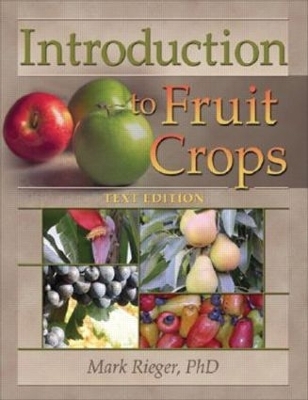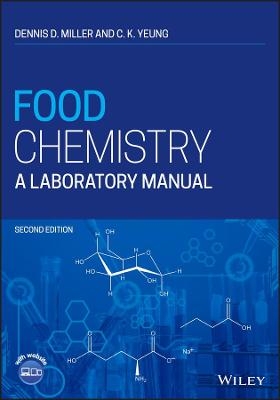
Introduction to Fruit Crops
Crc Press Inc (Verlag)
978-1-56022-259-0 (ISBN)
Find vital facts and information on a wide range of fruit cropswithout having to read the entire chapter!
Introduction to Fruit Crops combines an easy-to-use format with a complete review of essential facts about the world’s top fruit crops, making this both the premiere introductory textbook for students AND a superior reference book for avid gardeners, country agents, and horticulture educators. Each fruit is studied and clearly explained through its taxonomy, origin, history of cultivation, production, botanical description, optimum soil and climate, harvesting, and post-harvest handling. The book provides a comprehensive introductory section on fruit culture and, in following chapters, a standard outline for each crop to allow readers to find facts rapidly without having to read the entire chapter. This invaluable text includes detailed references and reading lists, making this a perfect addition for reference in university libraries.
Pomology, the branch of botany that studies the cultivation of fruits, has unique facts and features not found in the studies of other cultivated crops. Introduction to Fruit Crops takes these unique pomological concepts and important facts about the most popular cultivated fruits of the world and presents them in a consistent reader-friendly format that is readily understandable to beginning students. Professionals in the plant or agriculture sciences will find this text to be a powerful reference tool to answer their questions and find facts quickly and easily. Other issues explored include preventative measures from pests and diseases and practical cultivation strategies to best encourage maximum yield for each crop. Tables, graphs, and a multitude of color photographs assist readers to completely understand crucial information and the various stages of fruit growth for each crop. A detailed appendix explains common names, scientific names, and families of fruit crops. Another appendix presents conversion factors used in the text. A glossary helps beginners by clearly explaining common terms used in fruit crop study.
Introduction to Fruit Crops includes information on:
scientific names
folklore
medicinal properties
non-food usage
production
botanical description
plant morphology
pollination
soils
climate
propagation
rootstocks
planting design, training, and pruning
pest problemsincluding weeds, insects, mites, and diseases
harvest and postharvest handling
food uses
Some of the crops described include:
African oil palm
banana
orange
grape
apple
coconut
coffee
strawberry
nuts
olives
and many, many others!
This one text provides an extensive, easily understandable overview of the processes for growing healthy fruit in today’s world for beginners and is a valuable desk reference for plant science professionals of all types.
Mark Rieger
Chapter 1. Introduction to Fruit Crops and Overview of the Text ,, Fruit Crop Defined,, Taxonomy,, Origin, History of Cultivation,, Folklore, Medicinal Properties, Nonfood Usage,, Production,, Botanical Description,, General Culture,, Harvest, Postharvest Handling,, Contribution to Diet, Food Uses,, Chapter 2. Almond ( Prunus dulcis ),, Taxonomy,, Origin, History of Cultivation,, Folklore, Medicinal Properties, Nonfood Usage,, Production,, Botanical Description,, General Culture,, Harvest, Postharvest Handling,, Contribution to Diet,, Chapter 3. Apple ( Malus domestica ),, Taxonomy,, Origin, History of Cultivation,, Folklore, Medicinal Properties, Nonfood Usage,, Production,, Botanical Description,, General Culture,, Harvest, Postharvest Handling,, Contribution to Diet,, Chapter 4. Apricot ( Prunus armeniaca ),, Taxonomy,, Origin, History of Cultivation,, Folklore, Medicinal Properties, Nonfood Usage,, Production,, Botanical Description,, General Culture,, Harvest, Postharvest Handling,, Contribution to Diet,, Chapter 5. Banana and Plantain ( Musa spp.),, Taxonomy,, Origin, History of Cultivation,, Folklore, Medicinal Properties, Nonfood Usage,, Production,, Botanical Description,, General Culture,, Harvest, Postharvest Handling,, Contribution to Diet,, Chapter 6. Blackberries and Raspberries ( Rubus spp.),, Taxonomy
| Erscheint lt. Verlag | 17.6.2008 |
|---|---|
| Verlagsort | Bosa Roca |
| Sprache | englisch |
| Maße | 219 x 276 mm |
| Gewicht | 1247 g |
| Themenwelt | Technik ► Lebensmitteltechnologie |
| Weitere Fachgebiete ► Land- / Forstwirtschaft / Fischerei | |
| ISBN-10 | 1-56022-259-X / 156022259X |
| ISBN-13 | 978-1-56022-259-0 / 9781560222590 |
| Zustand | Neuware |
| Haben Sie eine Frage zum Produkt? |
aus dem Bereich


